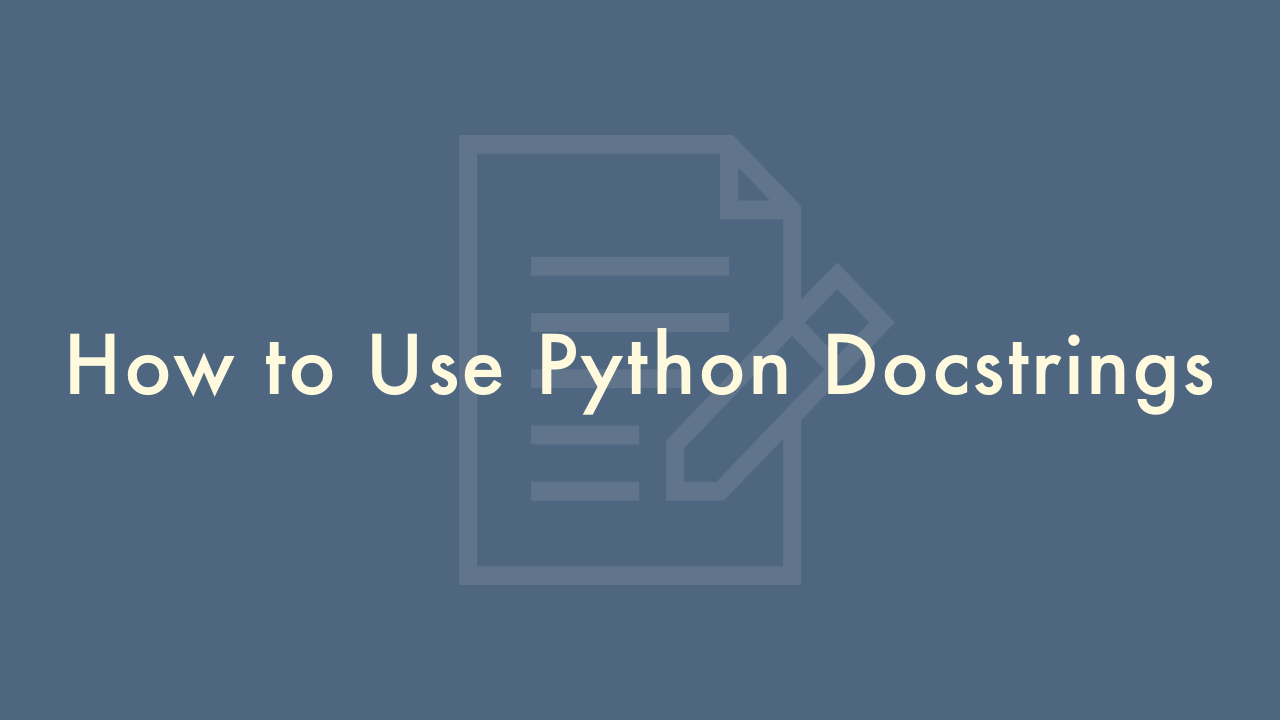How to Use Python Docstrings

Contents
In this article, you will learn how to use Python Docstrings.
Use Python Docstrings
Python docstrings are string literals that appear as the first statement in a module, function, class, or method definition. They provide a convenient way to document the purpose and behavior of these components, and can be accessed at runtime using the __doc__ attribute.
Here’s an example of how to use docstrings in a Python function:
def repeat_string(string, n):
"""
Repeat a string n times and return the resulting string.
Arguments:
string -- the string to be repeated
n -- the number of times to repeat the string
Returns:
A new string that is the concatenation of n copies of the input string.
"""
return string * n
In the example above, the docstring appears immediately after the function definition and provides a description of the function’s purpose, arguments, and return value. This information can be accessed at runtime using the __doc__ attribute:
>>> print(repeat_string.__doc__)
Repeat a string n times and return the resulting string.
Arguments:
string -- the string to be repeated
n -- the number of times to repeat the string
Returns:
A new string that is the concatenation of n copies of the input string.
Here are some additional details and best practices for using Python docstrings:
Formatting
Python docstrings should be written using triple quotes (either single or double quotes). The first line should be a brief summary of the component’s purpose, and any additional lines should provide a more detailed explanation.
Argument and return value documentation
If a function takes arguments, it is a good practice to specify the names and types of the arguments in the docstring. You can also specify the return value, including its type and a brief description of what it represents.
Consistency
It is important to maintain consistency in the formatting and content of your docstrings. This makes your code easier to read and understand, and helps ensure that documentation is accurate and up-to-date.
Use with help()
You can use the built-in help() function to display the docstring for a module, function, class, or method. For example: help(repeat_string) will display the docstring for the repeat_string function.
Use with an IDE
Many Integrated Development Environments (IDEs) provide tools for working with docstrings, such as auto-completion and syntax highlighting. This makes it easier to write and maintain accurate documentation.
ReST syntax
You can use the ReST (reStructuredText) syntax in your docstrings to provide additional formatting and structure. This allows you to create rich, multi-line docstrings with headings, lists, tables, and more.
Keep it up-to-date
It’s important to keep your docstrings up-to-date with any changes to the code. This ensures that the documentation accurately reflects the behavior of the code.
By following these best practices, you can write clear, informative, and useful docstrings that make your code easier to understand and maintain.